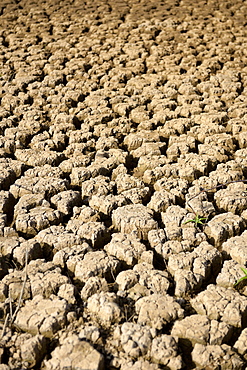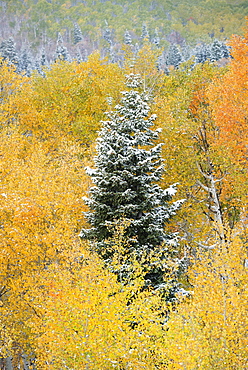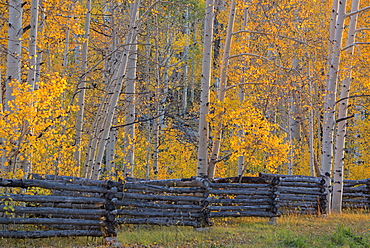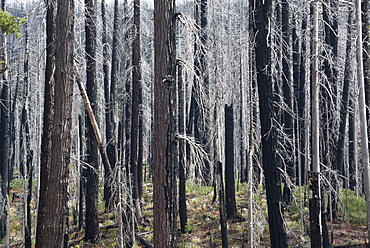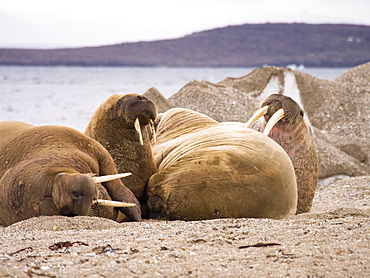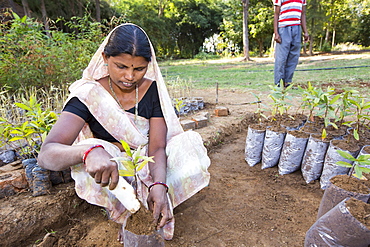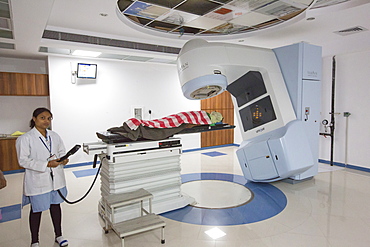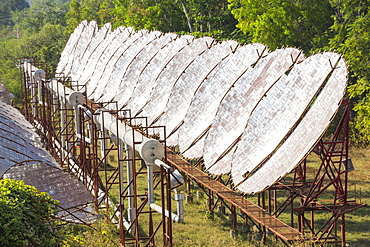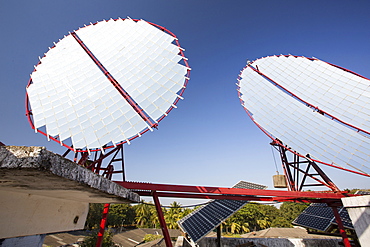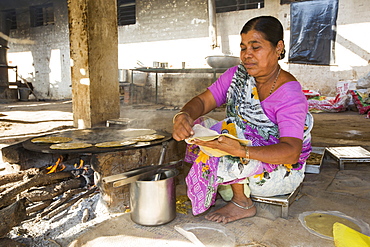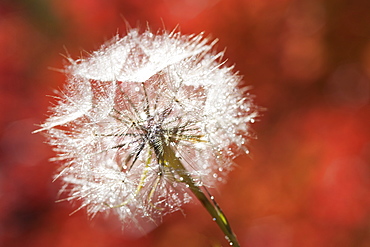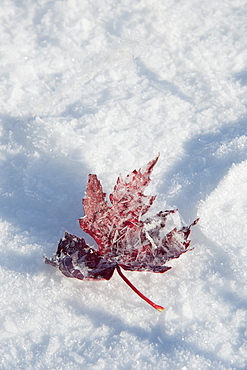Recent searches
Loading...
857-94086 - Mountain biker descends grassy meadow road in mountains
857-94025 - Woman takes photo with tablet on dock in mountain lake
857-94009 - Chimney Pond And Mount Katahdin In Maine's Baxter State Park
857-94007 - A Man Canoeing On Greenough Pond In Fall At Wentworths Location, New Hampshire
857-94006 - A Man Canoeing On Greenough Pond In Fall At Wentworths Location, New Hampshire
857-93942 - Young adult couple taking cell phone photo of harbor at sunset
1247-29 - Floodlit dome of St. Pauls Cathedral at night from One New Change, City of London, London, England, United Kingdom, Europe
367-6121 - St. Pauls Cathedral, One New Change, City of London, London, England, United Kingdom, Europe
367-6111 - Dome of St. Pauls Cathedral from One New Change shopping mall, London, England, United Kingdom, Europe
1226-198 - St. Paul's Cathedral from One New Change, City of London, London, England, United Kingdom, Europe
832-378663 - Dry ground on the shore, drought, silting, Jaguari reservoir in Sao Paulo, Brazil, South America
832-378662 - Dry ground on the shore, drought, silting, Jaguari reservoir in Sao Paulo, Brazil, South America
832-378646 - Dry ground on the shore, drought, silting, Jaguari reservoir in Sao Paulo, Brazil, South America
832-378643 - Dry ground on the shore, drought, silting, Jaguari reservoir in Sao Paulo, Brazil, South America
857-91856 - Frozen waterfall coming through a sandstone arch in Utah.
832-378489 - Cracked mud in a dried up water hole, Painted Desert, Hopi Reservation, Navajo Nation Reservation, Arizona, Southwest, United States of America, USA, North America
832-378490 - Cracked mud in a dried up water hole, Painted Desert, Hopi Reservation, Navajo Nation Reservation, Arizona, Southwest, United States of America, USA, North America
1174-3801 - Charred tree stumps and vibrant new growth, red and green foliage and plants in the forest after a fire, Fall foliage, Oregon, United States
1174-3798 - A forest trail through woodland in autumn, red and orange foliage beside the path, Mount Baker national forest, Washington State, United States
1174-3807 - A tall pine tree among aspen trees in autumn colour, Uinta National Forest, Utah, United States
1174-3797 - The Kolob Terrace and aspen trees in the Dixie national forest, Dixie National Forest, Utah, United States
1174-3805 - Charred tree trunks in the Willamette national forest after a fire, Charred trees, Oregon, United States
1174-3803 - Charred tree stumps and vibrant new growth, red and green foliage and plants in the forest after a fire, Fall foliage, Oregon, United States
1174-3806 - The landscape of the Uinta national forest in autumn, Fall foliage, Utah, United States
857-88916 - A woman running over the Animas River on a bridge on the Animas River Trail in Durango, Colorado.
1179-236 - Aerial view of the color contrasts of Barbuda, tones change according to the current and the difference of seafloor, Barbuda, Antigua and Barbuda, Leeward Islands, West Indies, Caribbean, Central America
1178-18792 - Low angle view of construction site and crane
1178-12433 - Man with scuba gear on boat, Florida, United States
911-10750 - The Remains of the Godwin battery on the beach at Kilnsea at the head of Spurn point on Yorkshires East Coast, UK. Initially constructed during the First World War, the Godwin Battery was added to during the Second World War. It comprised of gun emplacements, search light, barracks, officers’ mess, and a hospital. This section of coastline is the fastest eroding coastline in Europe. The soft boulder clay cliffs are easily eroded and have been eroding since Roman Times, but recently the climate change impacts of increased stormy weather, increased heavy rainfall events and sea level rise have accelerated the rate of erosion. The average rate of attrition is 1.5metres per year, last year it was 5 metres.
911-10780 - Walrus (Odobenus rosmarus) off a beach in northern Svalbard, once hunted to near extinction they are now recovering, only to be affected by climate change which reduces the sea ice they like to haul out on.
911-10749 - The Remains of the Godwin battery on the beach at Kilnsea at the head of Spurn point on Yorkshires East Coast, UK. Initially constructed during the First World War, the Godwin Battery was added to during the Second World War. It comprised of gun emplacements, search light, barracks, officers’ mess, and a hospital. This section of coastline is the fastest eroding coastline in Europe. The soft boulder clay cliffs are easily eroded and have been eroding since Roman Times, but recently the climate change impacts of increased stormy weather, increased heavy rainfall events and sea level rise have accelerated the rate of erosion. The average rate of attrition is 1.5metres per year, last year it was 5 metres.
911-10779 - Walrus (Odobenus rosmarus) off a beach in northern Svalbard, once hunted to near extinction they are now recovering, only to be affected by climate change which reduces the sea ice they like to haul out on.
911-10652 - Rotten sea ice at over 80 degrees North off the north coast of Svalbard. Climate change is causing sea ice to retreat rapidly. The latest science predicts that the Arctic will be completely ice free in the summer around 2054. The sea ice broke up very early around Svalbard in 2013.
911-10653 - Rotten sea ice at over 80 degrees North off the north coast of Svalbard. Climate change is causing sea ice to retreat rapidly. The latest science predicts that the Arctic will be completely ice free in the summer around 2054. The sea ice broke up very early around Svalbard in 2013.
911-10638 - The Muni Seva Ashram in Goraj, near Vadodara, India, is a tranquil haven of humanitarian care. The Ashram is hugely sustainable, next year it will be completely carbon neutral. Its first solar panels were installed in 1984, long before climate change was on anyones agenda. Their energy is provided from solar panels, and wood grown on the estate. Waste food and animal manure is turned inot biogas to run the estates cars and also used for cooking. Solar cookers are also used, and the air conditioning for the hospital is solar run. 70 % of the food used is grown on the estate. They provide an orphanage, schools for all ages, vocational training, care for the elderly, a specialist cancer hospital withstate of the art machinary, and even have a solar crematorium. This shot shows the girls school.
911-10637 - The Muni Seva Ashram in Goraj, near Vadodara, India, is a tranquil haven of humanitarian care. The Ashram is hugely sustainable, next year it will be completely carbon neutral. Its first solar panels were installed in 1984, long before climate change was on anyones agenda. Their energy is provided from solar panels, and wood grown on the estate. Waste food and animal manure is turned inot biogas to run the estates cars and also used for cooking. Solar cookers are also used, and the air conditioning for the hospital is solar run. 70 % of the food used is grown on the estate. They provide an orphanage, schools for all ages, vocational training, care for the elderly, a specialist cancer hospital withstate of the art machinary, and even have a solar crematorium. This shot shows a woman planting trees for onward growth in the Ashrams forests.
911-10636 - The Muni Seva Ashram in Goraj, near Vadodara, India, is a tranquil haven of humanitarian care. The Ashram is hugely sustainable, next year it will be completely carbon neutral. Its first solar panels were installed in 1984, long before climate change was on anyones agenda. Their energy is provided from solar panels, and wood grown on the estate. Waste food and animal manure is turned inot biogas to run the estates cars and also used for cooking. Solar cookers are also used, and the air conditioning for the hospital is solar run. 70 % of the food used is grown on the estate. They provide an orphanage, schools for all ages, vocational training, care for the elderly, a specialist cancer hospital withstate of the art machinary, and even have a solar crematorium. This shot shows a Varian nuclear proton therapy machine in the specialist cancer hospital.
911-10641 - The Muni Seva Ashram in Goraj, near Vadodara, India, is a tranquil haven of humanitarian care. The Ashram is hugely sustainable, next year it will be completely carbon neutral. Its first solar panels were installed in 1984, long before climate change was on anyones agenda. Their energy is provided from solar panels, and wood grown on the estate. Waste food and animal manure is turned inot biogas to run the estates cars and also used for cooking. Solar cookers are also used, and the air conditioning for the hospital is solar run. 70 % of the food used is grown on the estate. They provide an orphanage, schools for all ages, vocational training, care for the elderly, a specialist cancer hospital withstate of the art machinary, and even have a solar crematorium. This shot shows the solar air conditioning for the Ashram's hospital.
911-10639 - The Muni Seva Ashram in Goraj, near Vadodara, India, is a tranquil haven of humanitarian care. The Ashram is hugely sustainable, next year it will be completely carbon neutral. Its first solar panels were installed in 1984, long before climate change was on anyones agenda. Their energy is provided from solar panels, and wood grown on the estate. Waste food and animal manure is turned inot biogas to run the estates cars and also used for cooking. Solar cookers are also used, and the air conditioning for the hospital is solar run. 70 % of the food used is grown on the estate. They provide an orphanage, schools for all ages, vocational training, care for the elderly, a specialist cancer hospital withstate of the art machinary, and even have a solar crematorium. This shot shows solar panels that focus the suns rays on heat exchangers to boil oil, which is then sent down to the kitchens below to heat the cookers.
911-10444 - A Chinstrap Penguin, Pygoscelis antarctica, at Hannah Point on Livingston Island in the South Shetland Islands, Antarctic. Behind the penguin is lots of greenery, plants that are expanding as the Antarctic Peninsular warms as a result of climate change,
911-10635 - The Muni Seva Ashram in Goraj, near Vadodara, India, is a tranquil haven of humanitarian care. The Ashram is hugely sustainable, next year it will be completely carbon neutral. Its first solar panels were installed in 1984, long before climate change was on anyones agenda. Their energy is provided from solar panels, and wood grown on the estate. Waste food and animal manure is turned inot biogas to run the estates cars and also used for cooking. Solar cookers are also used, and the air conditioning for the hospital is solar run. 70 % of the food used is grown on the estate. They provide an orphanage, schools for all ages, vocational training, care for the elderly, a specialist cancer hospital withstate of the art machinary, and even have a solar crematorium. This shot shows a Hematology Analyzer for analyzing blood in one of the labs in the specialist cancer hospital.
911-10640 - The Muni Seva Ashram in Goraj, near Vadodara, India, is a tranquil haven of humanitarian care. The Ashram is hugely sustainable, next year it will be completely carbon neutral. Its first solar panels were installed in 1984, long before climate change was on anyones agenda. Their energy is provided from solar panels, and wood grown on the estate. Waste food and animal manure is turned inot biogas to run the estates cars and also used for cooking. Solar cookers are also used, and the air conditioning for the hospital is solar run. 70 % of the food used is grown on the estate. They provide an orphanage, schools for all ages, vocational training, care for the elderly, a specialist cancer hospital withstate of the art machinary, and even have a solar crematorium. This shot shows a cook preparing chapatis on a biofuel stove.
1178-9387 - Chameleon on branch, Greater Kruger National Park, South Africa
1178-8218 - USA, California, Mono County, Aspen tree against clear sky
1178-8206 - USA, Oregon, Salem, treelined autumn lane
911-10566 - The Thames barrier on the River Thames in London. It was constructed to protect the capital city from storm surge flooding. Recent predictions show it will probably be redundant in around twenty years due to increased stormy weather and sea level rise driven by climate change.
911-10567 - The Thames barrier on the River Thames in London. It was constructed to protect the capital city from storm surge flooding. Recent predictions show it will probably be redundant in around twenty years due to increased stormy weather and sea level rise driven by climate change.
911-10565 - The Thames barrier on the River Thames in London. It was constructed to protect the capital city from storm surge flooding. Recent predictions show it will probably be redundant in around twenty years due to increased stormy weather and sea level rise driven by climate change.
911-10316 - A cement works at Tehachapi Pass California, USA, with drought killed trees in the foreground. Cement production is one of the most carbon hungry industries on the planet, driving climate change and leading to drought.
911-10243 - A BP chemical plant at salt End on Humberside which produces Acetic Acid and a gas fired power station It is vulnerable to coastal flooding, and although sea defences were constructed some years ago, climate change driven sea level rise and increased stromy weather, leaves it vulnerable to inundation.
911-10229 - Rockhopper Penguins (Eudyptes chrysocome) washing in a stream on Westpoint island in the Falkland Islands off argentina, in South America. Numbers off rocxkhoppers have declined substantially, partly due to competition with commercial fishing and partly due to climate change, which causes their prey food to migrate to cooler waters.
911-10237 - A Kittiwake, Rissa tridactyla, on the Farne Islands, Northumberland, UK, next to a pool with red algae. Kittiwakes have declined drastically due to climate change causing their main fish prey species to migrate further north to find cooler sea temperatures.
911-10073 - A collapsed coastal road at Barmston on Yorkshires East Coast, near Skipsea, UK. The coast is composed of soft boulder clays, very vulnerable to coastal erosion. This sectiion of coast has been eroding since Roman times, with many villages having disappeared into the sea, and is the fastest eroding coast in Europe. Climate change is speeding up the erosion, with sea level rise, increased stormy weather and increased heavy rainfall events, all palying their part.
911-10074 - A Second world War lookout post leaning alarmingly and about to tumble over the edge of the cliff near Aldbrough on Yorkshires East Coast, UK. The coast is composed of soft boulder clays, very vulnerable to coastal erosion. This section of coast has been eroding since Roman times, with many villages having disappeared into the sea, and is the fastest eroding coast in Europe. Climate change is speeding up the erosion, with sea level rise, increased stormy weather and increased heavy rainfall events, all playing their part.
911-10071 - A collapsed coastal road at between Skipsea and Ulrome on Yorkshires East Coast, near Skipsea, UK. The coast is composed of soft boulder clays, very vulnerable to coastal erosion. This sectiion of coast has been eroding since Roman times, with many villages having disappeared into the sea, and is the fastest eroding coast in Europe. Climate change is speeding up the erosion, with sea level rise, increased stormy weather and increased heavy rainfall events, all palying their part.
911-10069 - Concrete sea defences at Beach Bank Caravan Park in Ulrome near Skipsea on Yorkshires East Coast, UK. The coast is composed of soft boulder clays, very vulnerable to coastal erosion. This section of coast has been eroding since Roman times, with many villages having disappeared into the sea, and is the fastest eroding coast in Europe. Climate change is speeding up the erosion, with sea level rise, increased stormy weather and increased heavy rainfall events, all playing their part.
911-10070 - A collapsed coastal road at near Aldbrough on Yorkshires East Coast, near Skipsea, UK. The coast is composed of soft boulder clays, very vulnerable to coastal erosion. This sectiion of coast has been eroding since Roman times, with many villages having disappeared into the sea, and is the fastest eroding coast in Europe. Climate change is speeding up the erosion, with sea level rise, increased stormy weather and increased heavy rainfall events, all palying their part.
911-10066 - A collapsed coastal road at Easingotn on Yorkshires East Coast, near Skipsea, UK. The coast is composed of soft boulder clays, very vulnerable to coastal erosion. This sectiion of coast has been eroding since Roman times, with many villages having disappeared into the sea, and is the fastest eroding coast in Europe. Climate change is speeding up the erosion, with sea level rise, increased stormy weather and increased heavy rainfall events, all palying their part.
911-10068 - A collapsed coastal road at between Skipsea and Ulrome on Yorkshires East Coast, near Skipsea, UK. The coast is composed of soft boulder clays, very vulnerable to coastal erosion. This sectiion of coast has been eroding since Roman times, with many villages having disappeared into the sea, and is the fastest eroding coast in Europe. Climate change is speeding up the erosion, with sea level rise, increased stormy weather and increased heavy rainfall events, all palying their part.
911-10072 - A collapsed coastal road at between Skipsea and Ulrome on Yorkshires East Coast, near Skipsea, UK. The coast is composed of soft boulder clays, very vulnerable to coastal erosion. This sectiion of coast has been eroding since Roman times, with many villages having disappeared into the sea, and is the fastest eroding coast in Europe. Climate change is speeding up the erosion, with sea level rise, increased stormy weather and increased heavy rainfall events, all palying their part.
911-10067 - A collapsed coastal road near Skipsea on Yorkshires East Coast, UK. The coast is composed of soft boulder clays, very vulnerable to coastal erosion. This sectiion of coast has been eroding since Roman times, with many villages having disappeared into the sea, and is the fastest eroding coast in Europe. Climate change is speeding up the erosion, with sea level rise, increased stormy weather and increased heavy rainfall events, all playing their part.
911-9947 - Guano in an Adelie Penguin, Pygoscelis adeliae, colony at Madder Cliffs, Suspiros Bay, at the west end of Joinville Island, Antarctica. Adelie's are a true Antarctic species which are suffering as a result of climate change, The Antarctic Peninsular, their only breeding grounds, is one of the fastest warming areas on the planet. This is causing Adelies to migrate south. They are reducing in numbers, they feed almost exclusively on Krill, which is also declining as a result of climate change.
851-622 - St. Paul's Cathedral viewed from One New Change in the City of London, London, England, United Kingdom, Europe
1174-2582 - A dandelion seedhead, delicate and fluffy, Wasatch national forest, Utah, USA
1174-2575 - A dried frosted leaf in winter resting on the snow, Wasatch national forest, Utah, USA













